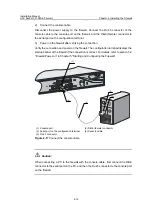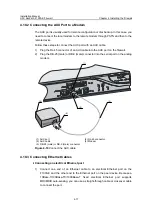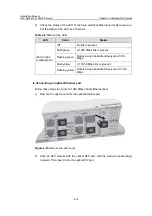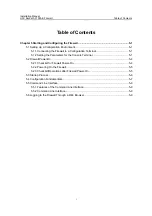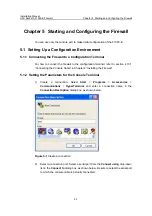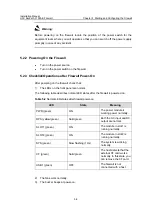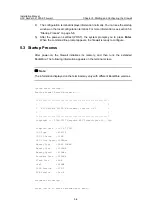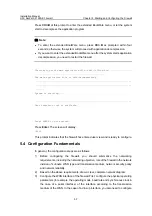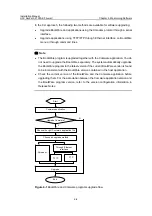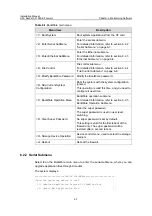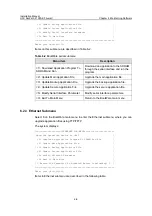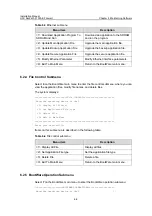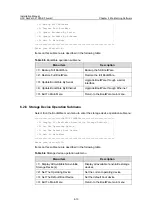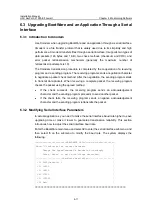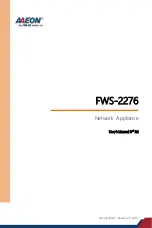
Installation Manual
H3C SecPath F1000-E Firewall
Chapter 5 Starting and Configuring the Firewall
5-8
DCC parameters. Then, configure the data link layer protocol encapsulated on the
interface and related operating parameters.
4) Configure the IP addresses of all the interfaces on the firewall according to the
division of the subnets.
5)
Configure routes. If it is necessary to enable a dynamic routing protocol, you need
to configure related operating parameters of the protocol.
6) Perform
security
configuration for the firewall if necessary.
7) Perform
reliability
configuration for the firewall if necessary.
For the configuration details of the protocols or functions of the firewall, refer to
H3C
SecPath Series Security Products User Manual
.
5.5 Command Line Interface
5.5.1 Features of the Command Line Interface
The command line interface (CLI) of the F1000-E provides a number of configuration
commands, which enable you to configure and manage the firewall.
The CLI provides the following functions:
z
Allows you to perform local configuration through the console port.
z
Allows you to perform the local or remote configuration and directly log in to and
manage other firewalls by using the
telnet
command.
z
Provides online help, which is available by entering “?”.
z
Provides network diagnostic tools, such as Tracert and Ping, for quick diagnosis of
network connectivity.
z
Provides all kinds of detailed debugging information to help diagnose network
faults.
z
Supports the auto-complete function. If you enter a conflict-free part of a command,
the command will be interpreted. For example, you just need to enter
dis
for the
display
command.
z
Supports the suggest function. For example, if you type
dis
and press
Tab
, all the
commands started with “dis” will be displayed.
5.5.2 Command Line Interface
The command line interface of the F1000-E provides plenty of configuration commands.
All the commands are grouped in system view. Each group corresponds to a view. You
can switch between different configuration views by using the corresponding
commands. In general, only certain commands can be executed in a particular view.
However, some commonly used commands, such as
ping
and
display
current-configuration
, can be executed in any view.

